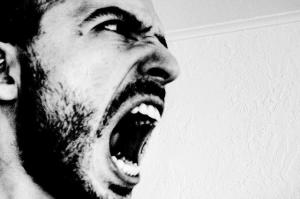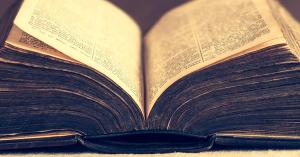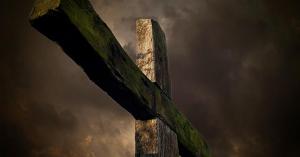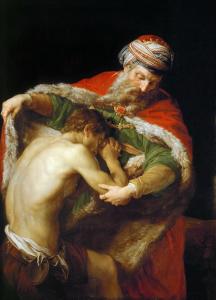How did Halloween move from a celebration of deceased saints to a “holiday” for the Devil?
Halloween
Halloween has become a commercial holiday and has become the second most money-making holiday of all (second only to Christmas), so what are the origins of Halloween? Originally, it was “All Hallows Eve” or “All Saints Day Eve” where several countries commemorated the deceased saints of old, including martyrs and all of the faithful who have passed into glory. This happens the evening before All Saints Day or All Hallows day which is observed on November 1st. The word “hallow” simply means to honor, devote, dedicate, consecrate, since “hallow” means to set something apart for a special purpose, and this day is special in the sense that all the departed saints are given honor. Today, it has moved from honoring the dead saints of old on November 1st to a pagan holiday observed the night before, and where people dress up in costumes and have parties and children collect candies, treats, or tricks. October 31st is the eve of All Saint’s Day, but the night before has become like a Devil’s holiday where the emphasis is scaring people half to death. It has moved from honoring the dead saints of old to almost honoring Satan and his demons, and it is a colossal commercial enterprise. Believe it or not, Halloween has a Christian origin, but today it is anything but Christian and doesn’t reflect what Christianity originally had in mind. As with many holidays, paganism has crept in, since many of the customs come primarily from the Celtic-speaking countries.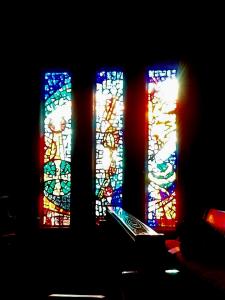
Costumes and Customs
The costumes originated from the idea of scaring away evil spirits, but the costumes today almost entice the evil spirits to participate. Much of the Halloween practices have been found to have roots in the Roman Pomona feasts that celebrated the Roman goddess of fruit and seeds, although some believe that Halloween originated in Parentalia, the festival of the dead. Either way, it is anything but Christian today, although originally it was intended to be religious holiday or observance for the deceased saints of old, so why all the costumes and scary images and decorations? For one thing, superstitious Celts believed that during the latter half of the year, as the days grew darker and darker, that the boundary between the other world (or spirit world) and ours became so thin that spirits were able to move from their world through ours, causing havoc. Thus, the scary images of Halloween included carved images on the pumpkins. They believed these images would keep away ghosts or evil spirits from the dead, although I’m not sure that a scary costume would keep a demon away. In fact, I assume they love this kind of stuff.
European Influence
Eventually, Europeans came together and meshed all of the Celtic ideas together, along with some of the Catholic ideas, and even some of the Roman religious rituals. These were all lumped into a one day celebration that fell around the time that the Celtic tradition of Samhain fell. It was the turning of the seasons when the world became a darker place by virtue of the sun’s position in the sky, and the ancients feared that the darkness would overtake their world. They thought there was a thin line between their world and the world where the spirits abided. The Irish lay claim to founding Halloween. They believed that on October 31st, the evilest of creatures and spirits came to visit them as they saw the year of light ending and the begging of “the dark season.” All Saints Day, which technically made October 31st All Hallows Eve, may have had its origins with the Byzantine Emperor Phocas who may have been trying to appease the Christians so that they could turn the pagan temple that honored the Roman gods into one that honored Mary and the martyred Christians. It was only much later (in 836) that Pope Gregory III fixed the date to where it is now, on November 1st. Before this, this celebration was held at several different times throughout Europe.
Tricks, Treats, and Pranks
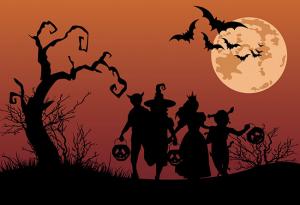 Halloween comes the night before November 1st and 2nd, and kicks off what is called the Tridduum of Allhallowtide which begins with All Saints Day on November 1st. This is when the graves of friends, relatives and other historical figures are cleaned and decorated, so it was dedicated to remembering past saints and Christian martyrs, and later, to all of the faithfully departed believers. There is a celebration or hallowing of their names or gravesites. In Latin American cultures, November 1st is designated for the Angelitos. The Angelitos are little angels which are deceased infants and children. November 2nd was a day of observation for deceased adults, so originally, the intention was not to scare away evil spirits or creatures by equally frightening images, but to honor the dead saints of old. Toilet papering homes may have been of U.S. origin, but the Irish brought with them some of the traditions of Halloween. They believed fairies came out of their mounds at Halloween and played pranks on the people who lived above the ground, so when the Irish immigrated to the U.S., they wanted to emulate this belief by going around and putting carriages on barns, turning over outhouses, and other such pranks. Jack-o’-lanterns were placed near doorways in the hopes of scaring spirits away, and that’s why all of the evil, scary-looking costumes and decorations were made. Since then, these costumes and decorations have become associated with Halloween. Now Halloween is associated with the most horrific violence there is. The chain saws come out, Freddy is back, the nightmares on Elm Street return, blood, guts, murder, death, and the whole gambit of every evil or wicked thing has its day in the second part of October. Tricks, treats, screams, and dreams…or should I say, nightmares for many. It’s hard to see any good at all in this.
Halloween comes the night before November 1st and 2nd, and kicks off what is called the Tridduum of Allhallowtide which begins with All Saints Day on November 1st. This is when the graves of friends, relatives and other historical figures are cleaned and decorated, so it was dedicated to remembering past saints and Christian martyrs, and later, to all of the faithfully departed believers. There is a celebration or hallowing of their names or gravesites. In Latin American cultures, November 1st is designated for the Angelitos. The Angelitos are little angels which are deceased infants and children. November 2nd was a day of observation for deceased adults, so originally, the intention was not to scare away evil spirits or creatures by equally frightening images, but to honor the dead saints of old. Toilet papering homes may have been of U.S. origin, but the Irish brought with them some of the traditions of Halloween. They believed fairies came out of their mounds at Halloween and played pranks on the people who lived above the ground, so when the Irish immigrated to the U.S., they wanted to emulate this belief by going around and putting carriages on barns, turning over outhouses, and other such pranks. Jack-o’-lanterns were placed near doorways in the hopes of scaring spirits away, and that’s why all of the evil, scary-looking costumes and decorations were made. Since then, these costumes and decorations have become associated with Halloween. Now Halloween is associated with the most horrific violence there is. The chain saws come out, Freddy is back, the nightmares on Elm Street return, blood, guts, murder, death, and the whole gambit of every evil or wicked thing has its day in the second part of October. Tricks, treats, screams, and dreams…or should I say, nightmares for many. It’s hard to see any good at all in this.
Conclusion
How we have changed All Hallows Eve and All Saints Day into a holiday for the Devil and his demons is beyond me. In the past, it was a reflection of a people’s cultural traditions and superstition, but today, there are many Christian religious services on October 31st which include evening services and lighting candles on the graves of dead saints. Today we hallow or honor the name of God alone and we have no fear of evil spirits. Many churches wisely use Halloween for Truth or Treats night where children can play games and win prizes or candy for answering certain biblical facts. Others hold a Judgment House, showing what God’s judgment will look like at Christ’s appearance (Rev 20:12-15, 21:8) or after death (Heb 9:27), and it is a judgment that is coming for all who refuse to repent and trust in Christ. One is full of paganism and superstition (Halloween), but God’s judgment is surer than tomorrow’s sunrise (Rev 20:12-15).
Article by Jack Wellman
Jack Wellman is Pastor of the Mulvane Brethren Church in Mulvane Kansas. Jack is a writer at Christian Quotes and also the Senior Writer at What Christians Want To Know whose mission is to equip, encourage, and energize Christians and to address questions about the believer’s daily walk with God and the Bible. You can follow Jack on Google Plus or check out his book Teaching Children the Gospel available on Amazon.


